A frequent topic of conversation on our trip so far has been our frustration at having to pay for 99% of things we buy using bash instead of card, and how out of pratice we are at managing our physical money. Coming from the UK, we barely ever carry any cash around with us, especially post-pandemic; indeed, most of the time you don’t even need a physical card since all payments can be done with your phone. On one occasion in Peru, we almost completely ran out of cash and had to very carefully ration our Pesos for a couple of days until we hit the next ATM. Most of the time though, the main frustration has been the constant battle to break the large denomination notes dispensed by ATMs, down into notes small enough that the typical tienda in the back of beyond will actually accept (they never seem to have any change).
We might have thought that our cash troubles were behind us now that we found ourselves in the supposedly “more developed” countries of Chile and Argentina, but our short time in Fiambala emphatically kiboshed that assumption. We arrived in town with just enough cash for an almuerzo, ice cream and some supplies for that evening’s dinner. If you’ve been paying attention at all to the international news, then you’ll know that Argentina has been stuck in a high inflation spiral for the best part of two decades now, and with the inauguration of the new president set for four days after we arrived in Fiambala, the currency situation was especially volatile. Coming from a country where 10% inflation sparks dire warnings of a cost of living crisis, it boggles the mind that Argentinians have put up with a situation where their savings are effectively wiped out from one week to the next for so long. This situation has spawned a significant market for US dollars with its own “blue dollar” exchange rate, as this is the only way that people can safeguard the value of their savings.
None of the ATMs in town had any money in them, and the post office which housed the Western Union looked like it had shut its doors years ago. We were stuck. Luckily, a Swedish expat also staying at our campsite offered to swap some of our emergency dollars for some Pesos, and thanks to iOverlander we also found another guy at the petrol station who would also exchange dollars. These “emergency” dollars were turning out to be “necessary” dollars here in Argentina!
Liquidity issues solved, our attention turned to our route beyond Fiambala. We’d initially assumed that we would continue south on the Seis Miles Sur (the slightly less intimidating sibling to the Seis Miles Norte that we’d ridden to get to Fiambala) however, when we looked out our dates, both Annie and us needed to get down to Santiago de Chile sooner than would be possible if we followed this route. Annie needed to catch a flight back to the UK on the 19th, while we needed to be in the Araucania (Monkey Puzzle) region of Chile for our planned meet up with Becky for Christmas. Thus, we decided to head west on the paved Paso San Francisco, cross back into Chile and drop down to the city of Copiapó where we had the option of bus (for us) or plane (for Annie) to get to Santiago.
Heading West in the Puna is always cause for concern, never mind when that West involves a continuous 200km climb! To avoid days of mind-numbing battling with the wind, we paid a local tourist outfit to drive us 180km in a pickup to Las Grutas, where the Argentinian border control post is located. We collected our exit stamps, sat down for a quick lunch and headed off up the final 20km climb to the actual border…only to turn round 5 minutes later! Despite only being 1pm, the wind was ferocious and at 4kph, it was going to take us to 6pm until we got to refugio no.6, where we’d planned to stop for the night. None of us were up for that, so we headed to the thermals near the border control for a lukewarm soak and chilled out afternoon.

Up bright an early the following day to beat the wind, we made it to the refugio before lunch with time to spare. Part of our original justification (to ourselves) for taking this “shortcut” route rather than the Seis Miles Sur, had been that it would give us the chance to try and climb Volcan San Francisco, a 6000m summit that is a relatively easy walk up from the pass. This would be El and Annie’s chance to get above 6000m for the first time, so they were justificably excited at the prospect. Arriving at the refugio though, it became increasingly clear that a summit bid was looking unlikely; El had started to show cold symptoms last night and had coughed her way up the climb, whilst Annie was mysteriously suffering from another bout of what we took to be altitude sickness. Could 3 days back down at 1400m in Fiambala have undone all that high altitude riding on Seis Miles?
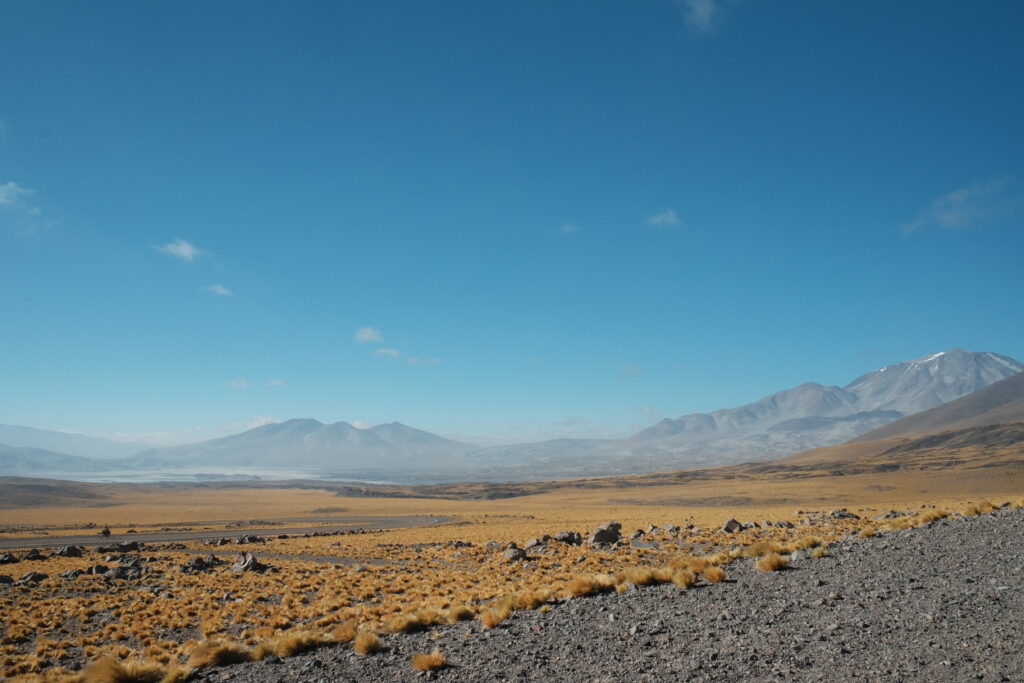

We hid from the wind behind the refugio, read our books, tried and failed not to get burnt by the insane UV levels and hoped that health would miraculously improve overnight. At 4700m though, there’s no coming back once you start to get sick, so it was with heavy hearts that we bailed on the climb plans and headed down to Laguna Verde, where we spent another afternoon reading and dipping in the (rather warmer) hot springs there. Despite the fact that Laguna Verde was teeming with tents (it seems to act as the unofficial basecamp for Ojos Salados), and our disappointment at having to can our climbing plans, it was nice to have the time to just sit, relax and graze without the pressure of having to ration our food. The lake itself is spectacular too with it constantly changing hues.
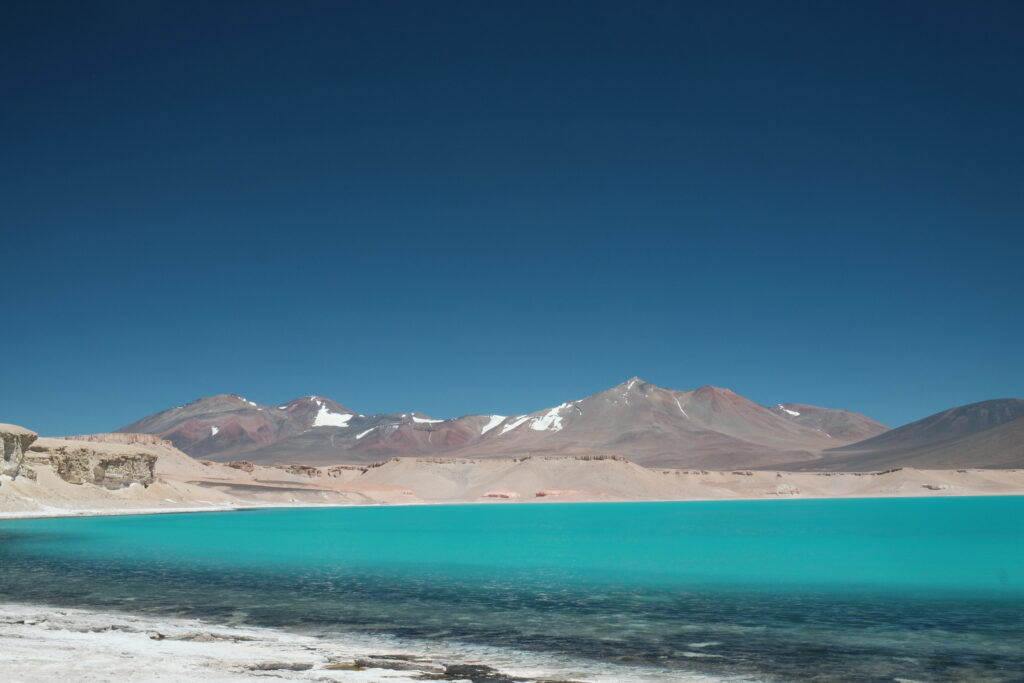
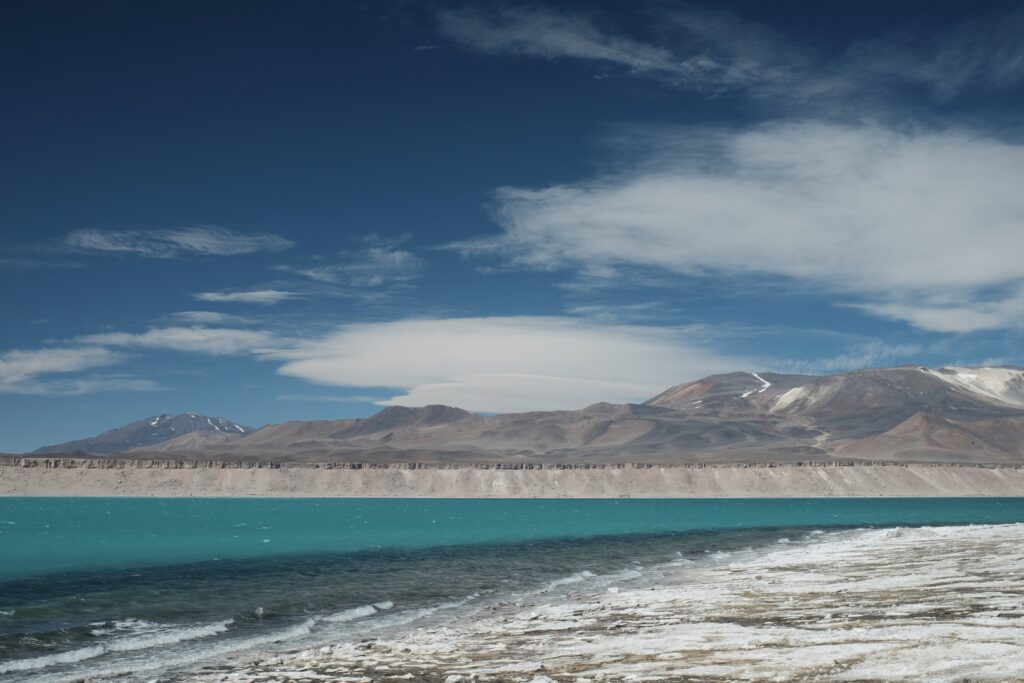
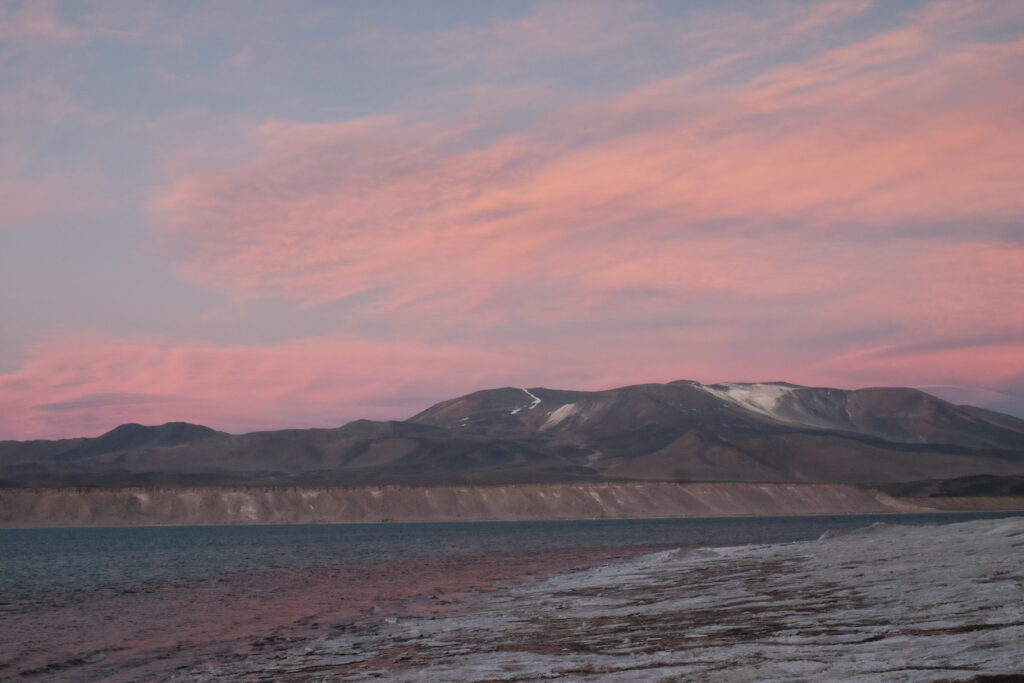
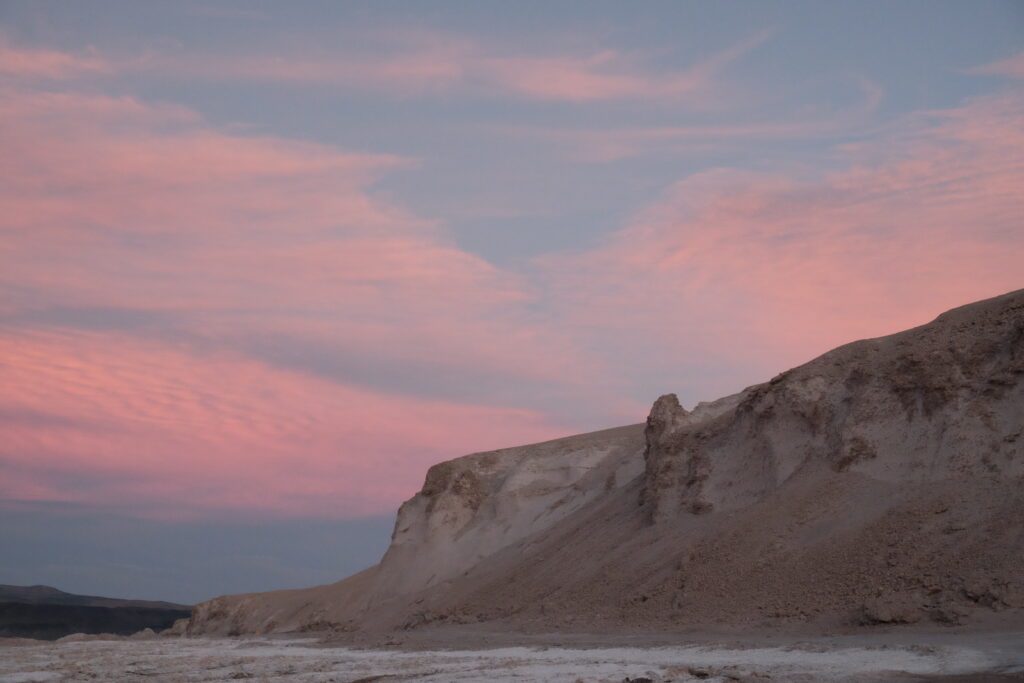
The following day would be our last full day on the Puna on this trip. The riding was easy and the wind was light, providing ample opportunity to look around and try and absorb this unique environment for one last time.
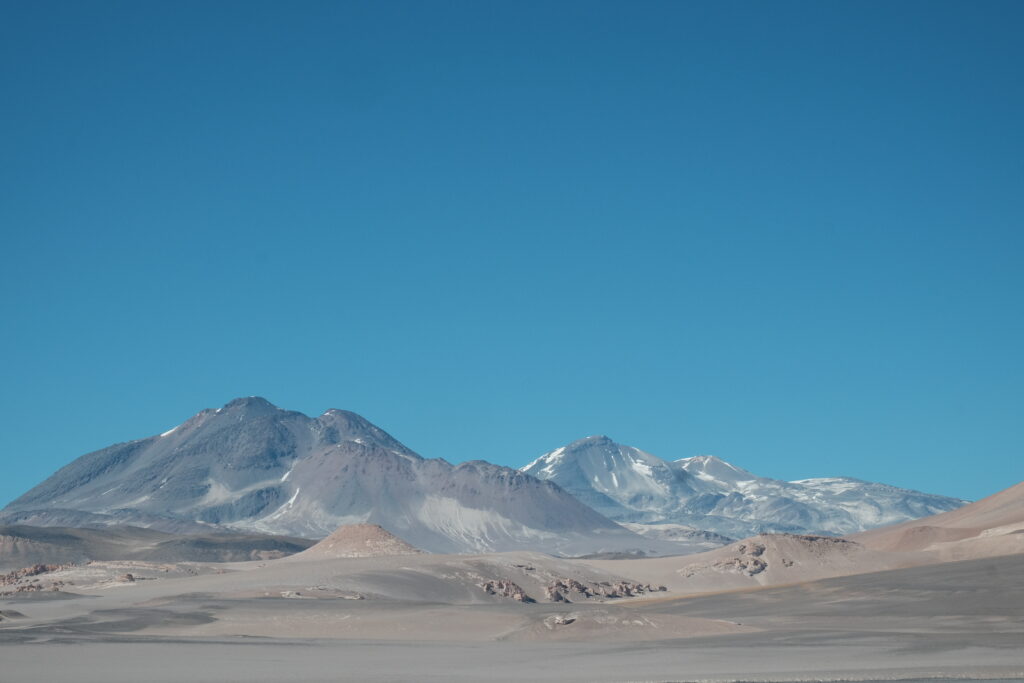

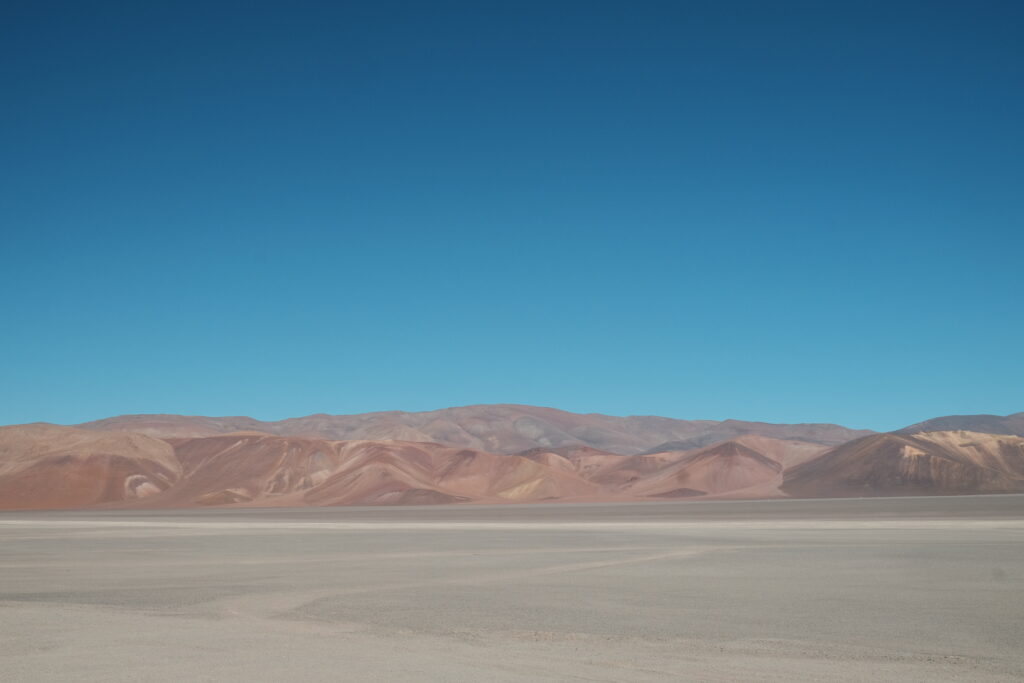
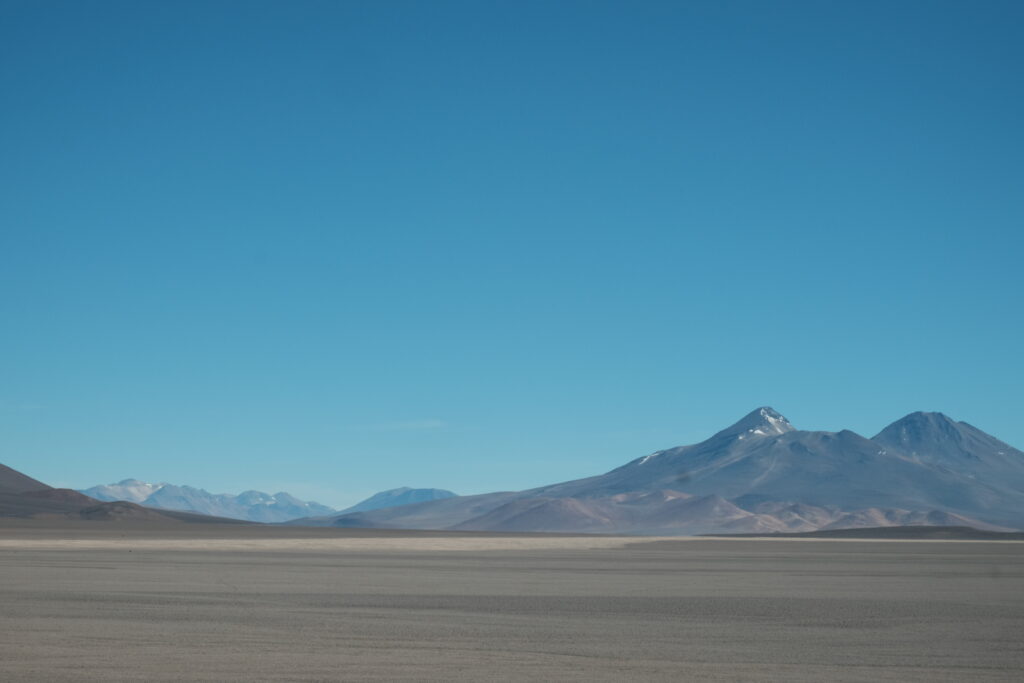
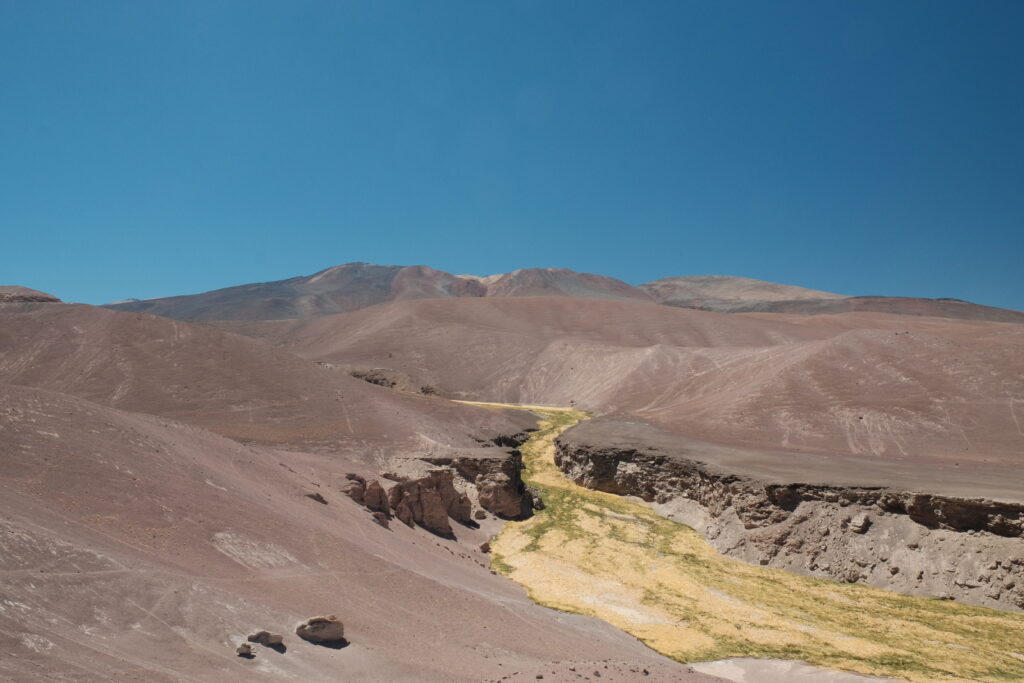
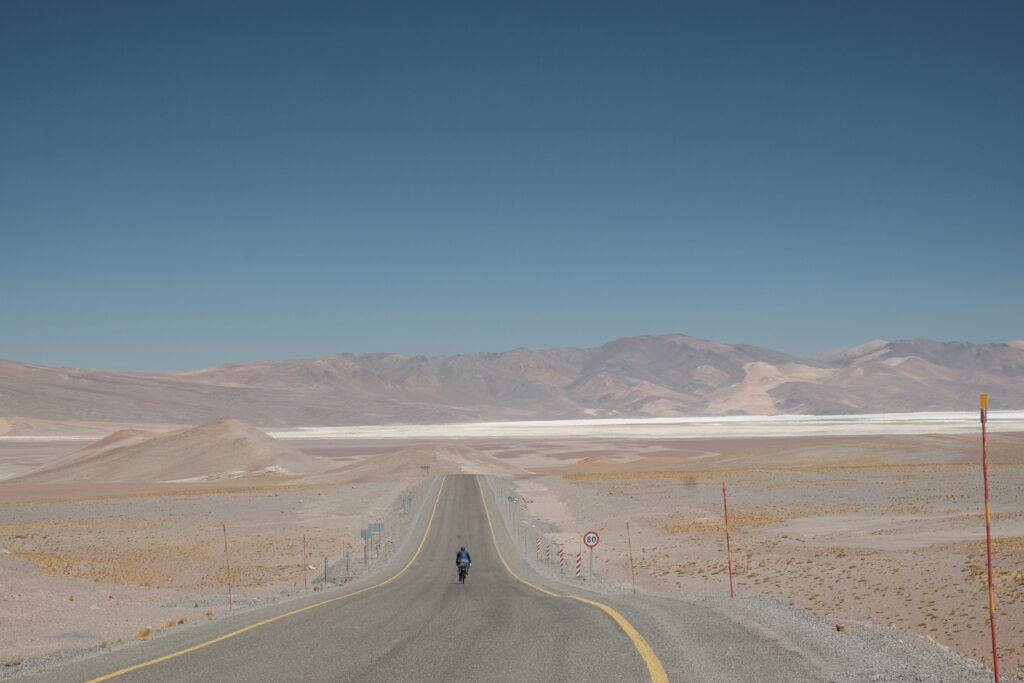
We kipped in a small dorm at the Chilean border control that night. The following morning, tarmac turned temporarily to dirt as we hit the final climb of our Puna experience. 500 more metres of up, then it would be down, down, down into the desert.

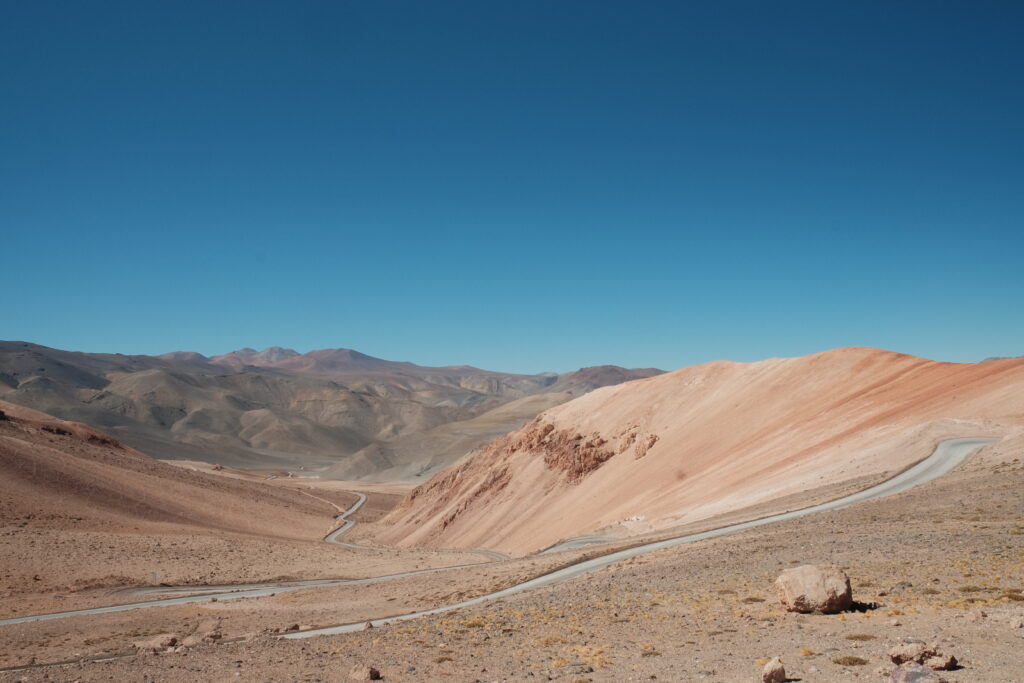

Anywhere else, a 100km descent would entail hours of coasting and soft pedalling. Here, the fierce headwind blowing up the valley meant that we still had to be on the pedals the whole time. By 2pm, we’d had enough and sought refuge in a rather luxurious storm drain beneath the road. One of our cyclist friends Oscar had joked that sleeping in these things is akin to staying in a “Japanese capsule hotel”, however, this example was probably significantly bigger than the standard Tokyo apartment! It proved perfect shelter from the wind and the sun.
Thankfully, the wind had dropped the following morning and we were treated to the easy cruise down that we had first envisaged when looking at the elevation profile. By lunch, we were in the highway and mining town of Copiapó, down below 1000m for the first time since surfing in Peru four months ago! We ticked off our various admin jobs quickly, enjoyed a rather delicious vegan almuerzo (Chile: expensive but some actual varierty of food options) and spent the afternoon sat on the grass on the main plaza.
We were heading straight off on the bus that evening, so we said our goodbyes to Annie in the square. It had been great sharing the past month in the Puna with someone else; someone to shake up the dynamic just a little bit and bring along some much needed new chat. Plus, Annie is hugely experienced at this type of expediation style touring, much more so than us, so her advice and input on everything from what food we bought at the outset, how we packed it on the bike, and how we managed both that food and ourselves to last the distance was invaluable. It was a pleasure having you along.
Our bus would be whisking us away nearly 1000km to the South into a completely different landscape, and so our final goodbye was to the Puna. Harsh, unrelenting, isolated, sandy…yes, it was all of those things. But it was also spectacularly beautiful, with its rolling hills of ever changing hues, perfect conical volcanoes, solicited lava flows, salty springs and salars. It’s the sort of place that feels terribly hard when you’re in it, but which you look back at with oddly fond memories. A type 2 kinda place. Unique, definitely, and undoubtedly one of the highlights of our trip so far.

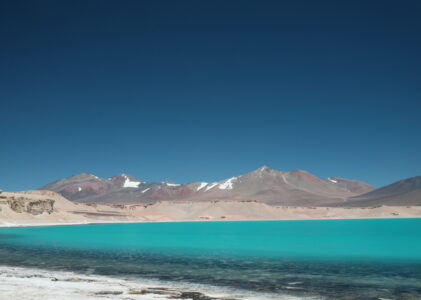
I enjoyed reading about the sufferfest. From your experience, I am happy to let you have all the fun on that one.